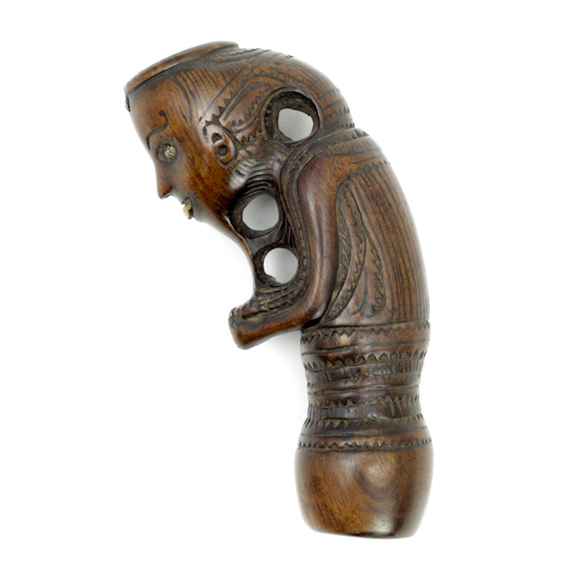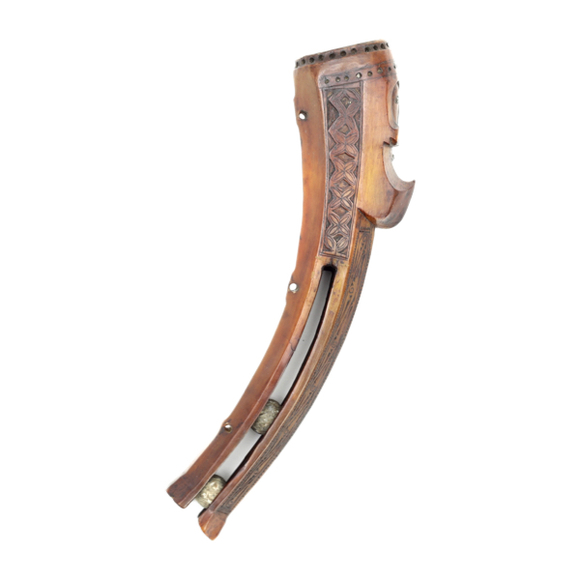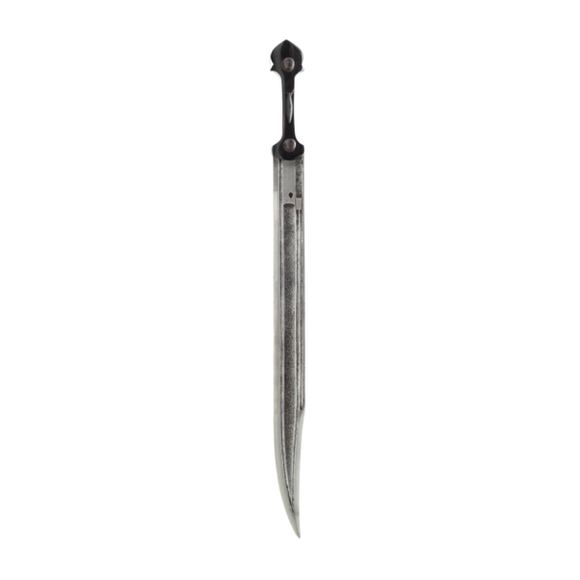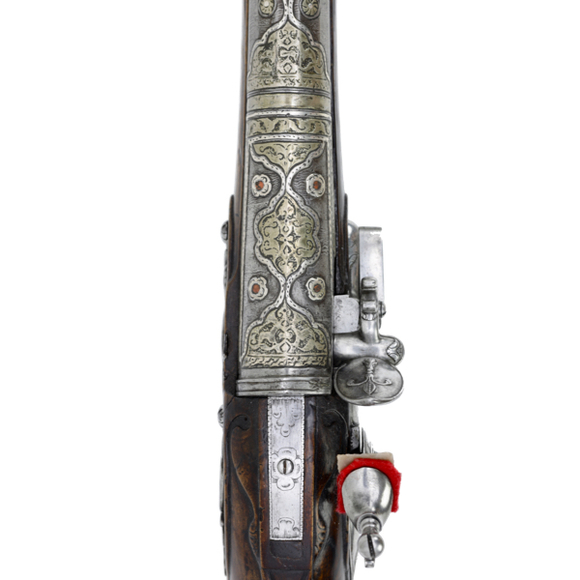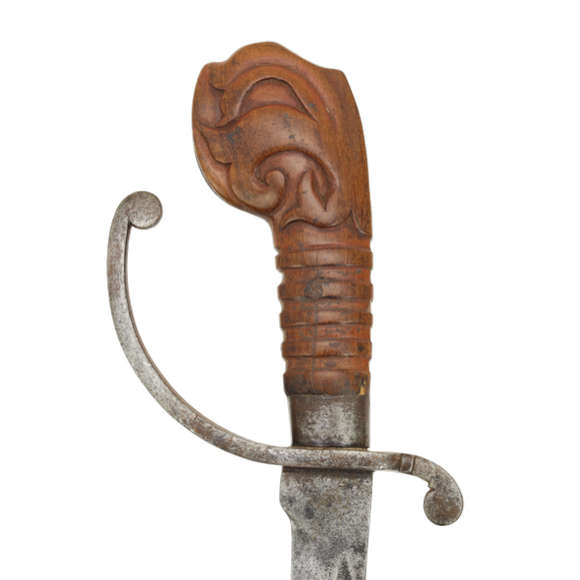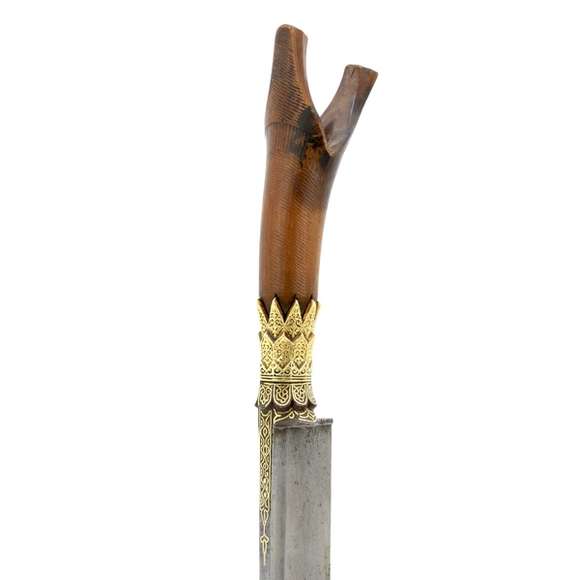Made of carved wood with metal inlays for eyes and mouth.

With tang 73.2 cm
Blade 66.9 cm
Base 13 mm
Middle 3.2 mm
5 cm from tip 2.8 mm
Ganja 91 mm
Base 67mm
Middle 31 mm
5 cm from tip 22 mm
553 grams
Iron, steel, wood
The Malay peninsula or Sumatra
European blade 17th century
Malay part 18th-19th century
Description
An interesting variety of the keris panjang (long keris) that used the tip of a 17th-century European riding sword. The European blade is double-edged and of hexagonal cross-section for most of its length. It has three narrow grooves near its base.
The sword is lap welded onto a traditional Sumatran widening keris base with separate ganja at the bottom. Strength comes from two langets that project forward and three rivets that go through the blade. The construction is known locally as keris mata kapit where mata means "eye" and kapit means "to squeeze" or "to press".
It has a very thick and deeply patinated pesi (tang) that suggests the whole may have quite some age for if the patina formed due to neglect, we would expect the blade to be in worse shape as well.
It comes in a Sumatran or Malay style scabbard with typical wrangka (top section) for this area. The gandar (scabbard body) is slightly narrower than the base of the wrangka, suggesting it was once covered with a silver decorative metal sleeve.
Size
The piece is very large when compared to the usual keris panjang, which is already an oversized version of the keris.

Dating & attribution
Always hard with such items. The European part of the blade is definitely 17th century. When the marriage to the Indonesian base of the blade happens remains uncertain but it is apparent that the scabbard is quite old, leading me to believe that the marriage could have happened in the 18th century.
Such weapons were worn as prestige weapons, and in some cases also served for executions. for more information, see my glossary article: Keris panjang.
Conclusion
An interesting and very rare example of a keris panjang with European blade. I believe the entire genre of keris panjang may well have been derived from such European swords that were re-mounted as keris, and later longer keris were made to emulate them.


























Its blade with very fine and complex pamor, brought out by a polish.

